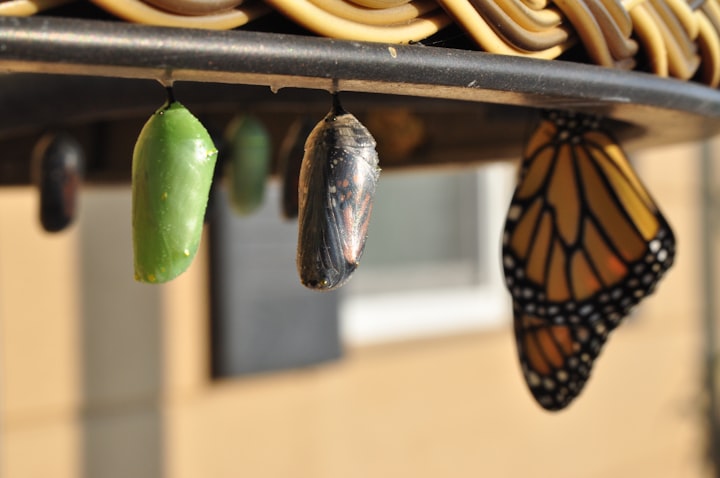Marketing a Book: Keep Firing the Pucks
~ At the end of the day, there is one variable we can control: effort

Expectation vs. Reality
In the beginning. . . I thought, simple: I write; the publisher promotes. Well, partially, but not quite so black and white. Turns out, getting the word out is a lot more difficult than getting the words down.
Beyond that reality, I discovered two ironies.
1. In-the-Dark Travel: My book (What’s Not Allowed? A Family Journey with Autism) is about the autism journey, much of which was—and continues to be—an in-the-dark, choose-your-own-adventure odyssey: no roadmap and without a plan, surprising to me because autism is so prevalent. Surely there is a blueprint for new inductees? Nope. Enter book marketing: more in-the-dark travel. Eureka! I am writing a book about rudderless travel, and marketing this book turns out to be the very same! Go figure.
2. My Working Title is a Marketing Reality: The working title for What's Not Allowed? is a mantra I was taught years ago while teaching in Japan: Continue is the Power (CITP). You must never give up. . . just keep on going, no matter what, an Asian spin on ‘Keep calm and carry on.’ Book marketing is also this: perseverance in a whiteout, a form of CITP rivalled only—in my experience—by motherhood.

Mindset Matters
Once I understood these two realities, there was one more thing to do before the book launch: sharpen my mindset.
Why am I writing this book? What do I hope to achieve?
Asking myself this made marketing feel less like hard sell and more like helping. And helping is giving, which feels right.
Why a book? What do I expect of this medium?
Not until the online release date did the book feel like what it is: a birth. And that is what I've come to call this memoir—Paper Baby. Like a child, launching a book is an outpouring and a send-off: the representative is propelled into the world to find its way—its legs. A book, like a child, yields pride and joy; the flip-side is time and money. Once I reframed “book” to “child” and an extension of my soul, accepting that the flow would be out, not in, made sense.
As my father quipped when our daughter was born, "This girl's gonna cost you!" Déjà vu. This baby's gonna cost you, too. Authorship, like parental love, is unconditional.

A Plan, Please?
My systemizing mind kicked in next. Craving a plan and a methodical way forward, I began peppering my publicist with texts and emails. What now? What next? I kept asking. And in the questioning I discovered another truism: It depends. What works for some books may or may not work for others. It depends upon the subject matter, the genre, the author, the social media presence, the public appeal, the demographic, the current state of the world (a pandemic, for example), the timing. It depends.
Circling back to autism, when you've seen one person with autism, you've seen one person with autism. Likewise, when you've seen one book launch, you've seen one book launch.

Messaging: Type, Tone & Timing
What am I trying to communicate—and how?
1. Type - Marketing messaging has been direct—about the book—and indirect, themes surrounding the topic, in this case autism. Themes have included: digesting a diagnosis; disclosure; reaction to different; neurodiversity; family dynamic and roles; caregiver mental health; the role of self-regulation; Great Big Emotion; the power of words to shape and sculpt; the transformative power of belief and believers; creating optimum environments; mining potential, to name a few.
Bottom line? When I aim to sell a book, the result is lukewarm. When I aim to share messages, things improve. Better still, when I step out of my shoes and into the perspective of the person I am soliciting—interviewer, podcaster, blogger, reviewer, therapist—and dovetail our purpose, the message becomes amplified. The marketing becomes a conversation, a weave, resonant because of the overlap. To be noticed and to be heard:
"Make your message their message."
2. Tone (Intent) - When it comes to sharing marketing materials (e-marketing, excerpts, podcast links, visuals, etc.) for reposting, I was given a solid piece of advice early on:
"Make it clear what you want them to do. And make it easy for them to do it."
3. Timing - Messages have been pre and post launch. See the chronology, below.

Snapshot: 22 Steps. . . & Repeat
Here's how What's Not Allowed? rolled out. Reviewing the list after the fact, the process appears pre-planned, but it was not. It was intuitive and responsive. It continues to be that way. Included in this timeline are tips and techniques gleaned en route. Much of the learning has been in failure (to meet expectation) and in shifting gears and trying again. Less expectation and more celebration has become a go-to mantra.
Pre-Release Date (= soft launch)
1. Endorsements - Eight months prior to release, I sought endorsements from forty-four people who had shared our autism journey—colleagues, practitioners, politicians, public figures. Included in this "ask" was a synopsis of the book, a visual of the cover spread and themes and excerpts from the book. My return was 40% (after many follow-up emails) but that meant eighteen thoughtful testimonials. The publicist suggested seeking three types of endorsement: writing style, messaging and or author as a subject matter contributor beyond the book.
2. Press Release #1 - The first press release (six months before the online release date) was timed to coincide with larger world issues: World Autism Awareness Month (April) and more pressing, a worldwide pandemic. Wording the press release to highlight broader issues and offer solutions was step one. In 2020, if you weren't talking pandemic, you weren't talking.
3. Advance Reader Copies (ARC) - The publisher sent out fifty advance reader copies of the book two months before release. These were sent to select autism organizations, media reviewers and social media influencers. Included in the package was a cover letter from the publicist, a personal note from the author and a marketing poster (I'll talk more about that later on).
4. Personal Email List - A month before release, my husband and I sent news of the book, visuals, and sample endorsements to our combined email list—perhaps 150 people. Because email is targeted and personal, the likelihood of a book purchase (or a library request) is much greater with email than via social media.
5. Organizations - Two weeks before release date, I contacted all endorsers (each endorser had received a final copy of the book by this time) and organizations who had received an ARC, announcing that launch was imminent. I included an e-poster and a request for sharing with their clients and networks. One can ask, but there is no guarantee that the request will be met.
6. Publisher's Social Media and Influencers - The publicist posted the marketing flyer and other visuals via the publishing house social media (Facebook, Instagram and Twitter) and solicited the reach of book review influencers. A social media presence is not something I have vigorously cultivated, so we went, primarily, through the publisher's.

Post-Release Date (= hard launch)
7. Press Release #2 - The second press release—one week before the book was released on Amazon and Indigo—was timed to coincide with Canadian Autism Awareness Month (October). Again, connecting the book to an event, and beyond that, to a worldwide pandemic, was a way of garnering interest.
8. Media Interviews - Five days before release, the publicist lined up interviews, coast to coast, with national and provincial broadcasters. Given the pandemic restrictions, the book launch needed to be virtual; the anticipation around the press coverage made up for the inability to hold an in-person event. The media conversations were lively and focussed on broader topics: autism and its impact on families—and beyond that, autism through a pandemic lens. It was during this week that I learned the term "organic" as it relates to interviews: go with the conversational flow.
9. Media Blitz - Armed with a press release and interview links, I wrote sixty email pitches to news organizations, newspapers and magazines throughout Canada. I heard back from one news agency. That’s a two percent return, but I was ecstatic to receive it. Publicist input: sample pitches and excellent advice re. approaching the media—
"Be succinct."
To that end:
- Everyone is jostling to have their voice heard, for airtime.
- Create a succinct pitch that relates to something of public interest.
- The press scan down the middle of the page.
- Make your pitch scannable—"at a glance."
- You're not marketing a book; you're marketing messages.
- If audiences like your message, they may wish to read your book.
Regarding media contact information:
- Most can be googled.
- Build a list.
- Send to all.
- Resend different pitches at intervals.

10. Podcasts - In the weeks and months after the book was released, I researched podcasts and began making podcast lists related to themes: autism, parenting, and to sub-themes in the book (resilience, happiness, perseverance). I sent dozens of pitches and appeared in a handful of podcasts as a guest (recorded via Zoom or phone).
"Having an enlightening conversation related to themes in the book is an effective way of sharing key messages. "
11. Endorsers / Organizations - I circled back to endorsers and autism organizations across the country with updates as reader feedback came in, and I resent the electronic marketing poster. The intent was to create a conversation around the book and to keep the book on people's radar.

12. Reviews - Every word helps to spread the word. Publicist advice: ask friends and colleagues who have read the book to write a review on Amazon, Indigo and Goodreads. To make writing a review simple and quick, cut and paste a line or two that friends have written to you and indicate that those words would be ideal as an online review. Providing a sample (of their words) and a link to the review sites speeds up the process. Make it clear what you want them to do. Make it easy for them to do it.
13. Libraries - In addition to registering What's Not Allowed? with Archives Canada Cataloguing in Publication, the publicist recommended asking friends and family to request the book at their local library. This can be done six weeks after publication. Requested books are purchased books. Libraries associated with national organizations and colleges are also worth checking out.
14. Book Registries – Fellow authors have suggested creating accounts and visibility through provincial and online book registries such as BC BookLook and Goodreads.

15. Marketing Materials - Because of COVID and concerns with handing out bookmarks, we went with a marketing poster which can be displayed or circulated electronically. Once in-person book talks are possible, a retractable banner printed with a cover visual and endorsements will add impact.
16. Magazines - I have approached many. Some have provided opportunities for book reviews and author dialogue. I have sent pitches to family magazines re. parenting and education topics. Publicist reminder: create a succinct pitch and or send a ready-made article which relates to themes magazines are seeking.

17. Vocal Media - Vocal Media is an online platform for uploading and sharing writing. Accounts are free to create. Once a story is accepted and posted, the product is crisp and esthetically pleasing and makes for effective sharing—on any form of social media and on professional platforms such as LinkedIn.
"Providing book excerpts and related vignettes is like handing out food samples: a nibble may encourage a larger bite. "
18. Social Media - Posting Vocal Media, podcast and or interview links to social media helps to spread the messages. I share with others with the hope that they will be inspired to share with their networks.
19. Website - I have been told that garnering a following via a website is a smart investment. It is also a point of connection and collaboration. My website is a work in progress and a learning curve.
20. Literary Awards - I researched awards that might apply to my memoir, and my publicist did the same. A good friend did some online digging as well. Publicist advice: one does not submit a title with the expectation of winning an award, but with the knowledge that one's book will be read by a literary jury and that the book may resonate beyond the context of the award category. You never know where seeds may be sown.
21. Literary Contests - Entering literary contests—like Canada Writes—ensures your writing is read and increases the possibility for recognition.
22. Book Talks - Post-pandemic, when gatherings are again permitted, book talks can be planned. In the meantime, there are ways to stage book talks via virtual means. I have not explored this, preferring the podcast platform.

Continue is the Power
Twenty-two steps later. . . What next? For the most part, repeat. Continue to circulate samples, to have conversations and to spread messages. Keep the buzz going and see what happens. You never know what may make a difference, but there is one thing that can be controlled: effort.
Collaborating with other authors and sharing what works is part of our ongoing education. To continue is our collective power. And to this, Wayne Gretzky comes to mind:
"You miss one hundred percent of the shots you don't take."
I imagine hockey pucks lined up on the ice. I fire away. Most miss the net. One may graze the post. I line them up and shoot again. Marketing a book is like this, and there is one certainty: "You just can't beat the person who never gives up." -Babe Ruth
___________________________________________________
Teresa Hedley is the author of What’s Not Allowed? A Family Journey with Autism (Wintertickle Press, 2020), a memoir which offers an uplifting approach to mining the best version of each of us, autism or not. Teresa is also an educator and a curriculum designer. Teaching stints in Canada, Japan, Greece, Spain and Germany have shaped her perspective and inform her writing. Teresa and son Erik co-wrote a twenty-article series for Autism Matters magazine, “I Have Autism and I Need Your Help.” Additionally, Teresa worked directly with families and school boards in Ottawa as an autism consultant and advocate. She and her family live and play on Vancouver Island.

“Erik and his family powerfully advocate for autism appreciation—that different does not mean wrong and is in fact an important part of the joy that comes from being able to learn from one another.”
–JONATHAN A. WEISS PhD, CPsych, York Research Chair in Autism and Neurodevelopmental Disability Mental Health; Toronto, ON
About the Creator
Teresa Hedley
Greetings from the beach... where you'll find me exploring, reading, writing, hiking and kayaking with our local seals. I'm excited to share my stories with you via What's Not Allowed? A Family Journey With Autism. Now on Amazon + Chapters






Comments
There are no comments for this story
Be the first to respond and start the conversation.